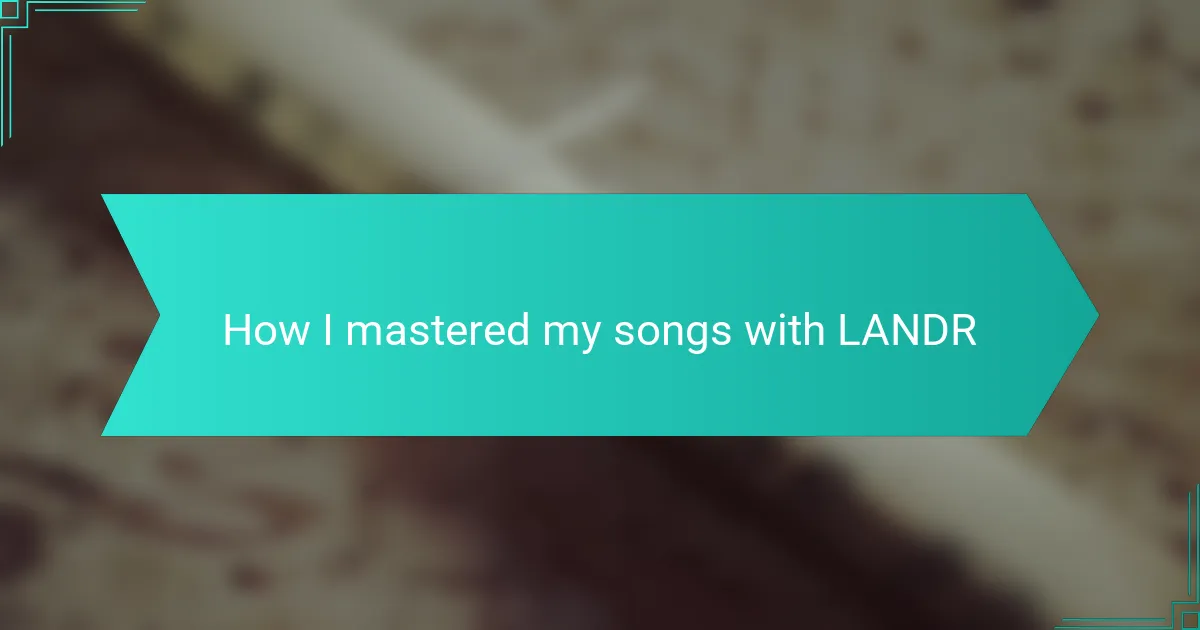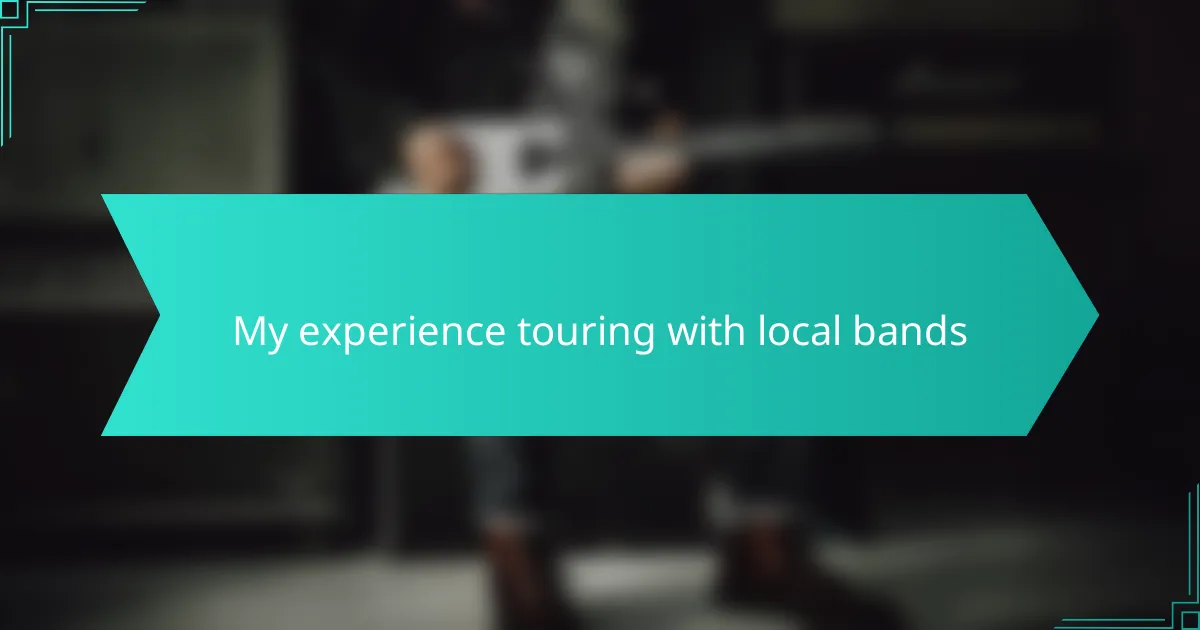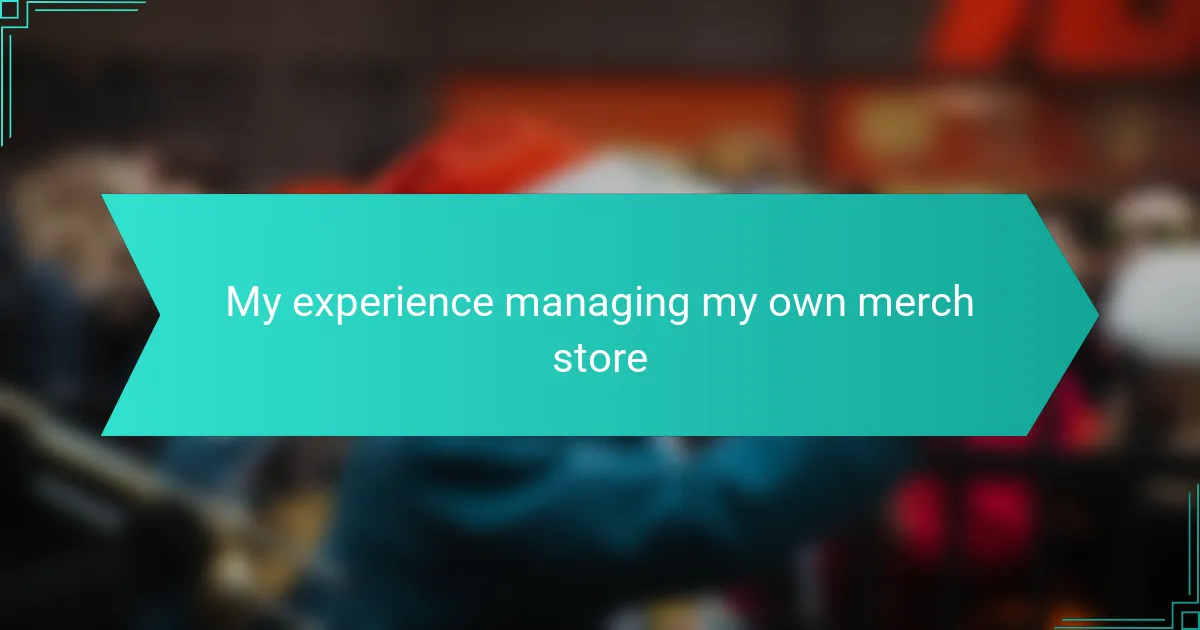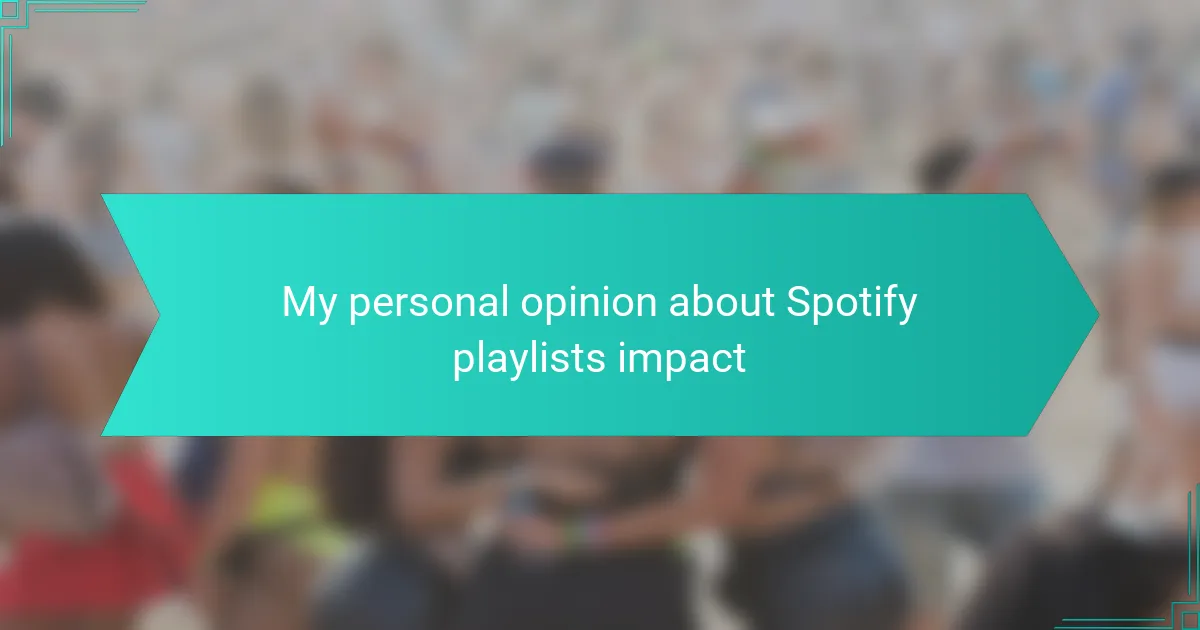Key takeaways
- Collaboration with directors and cinematographers enhances the music video creation process, elevating artistic vision.
- Music videos are essential for artistic expression, audience connection, and increasing visibility on digital platforms.
- Storytelling and emotional resonance are crucial components for creating a compelling music video that captures viewer attention.
- Flexibility and openness to spontaneity during shoots can lead to unexpectedly powerful moments that improve the final product.
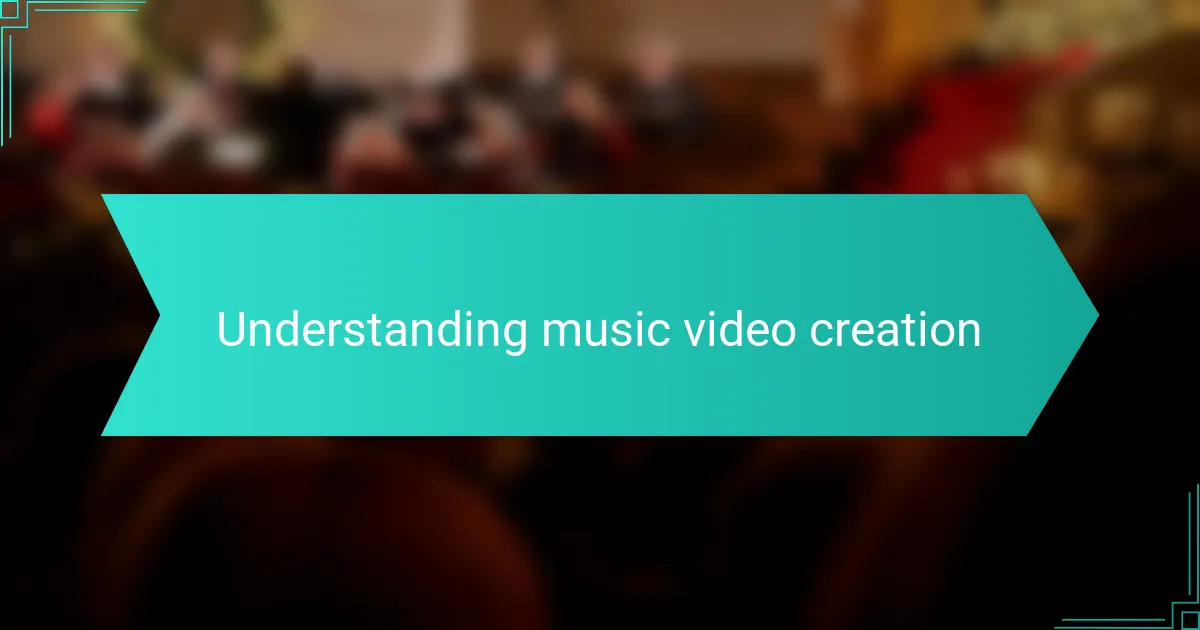
Understanding music video creation
Creating a music video is like painting with sound and sight, blending rhythm with visuals to tell a story. When I was working on my first music video, I realized that each shot had to convey an emotion that complements the music. Have you ever felt like a song captured a moment in time? That’s exactly what a good music video aims to do—it encapsulates the essence of the track.
As I dove deeper into the process, I discovered that collaboration is key. Working closely with directors, cinematographers, and dancers can elevate your vision. I remember feeling a rush of excitement during brainstorming meetings, where every idea, no matter how wild, sparked creativity and formed the foundation of our project.
Ultimately, understanding the technical aspects, like lighting and editing, can transform your concept from a simple idea into a captivating visual narrative. It’s fascinating how the right angle can change the audience’s perception of the song. I often ask myself, how can we make every frame resonate? This contemplation not only pushes my artistic boundaries but also connects us all through shared interpretations of art.
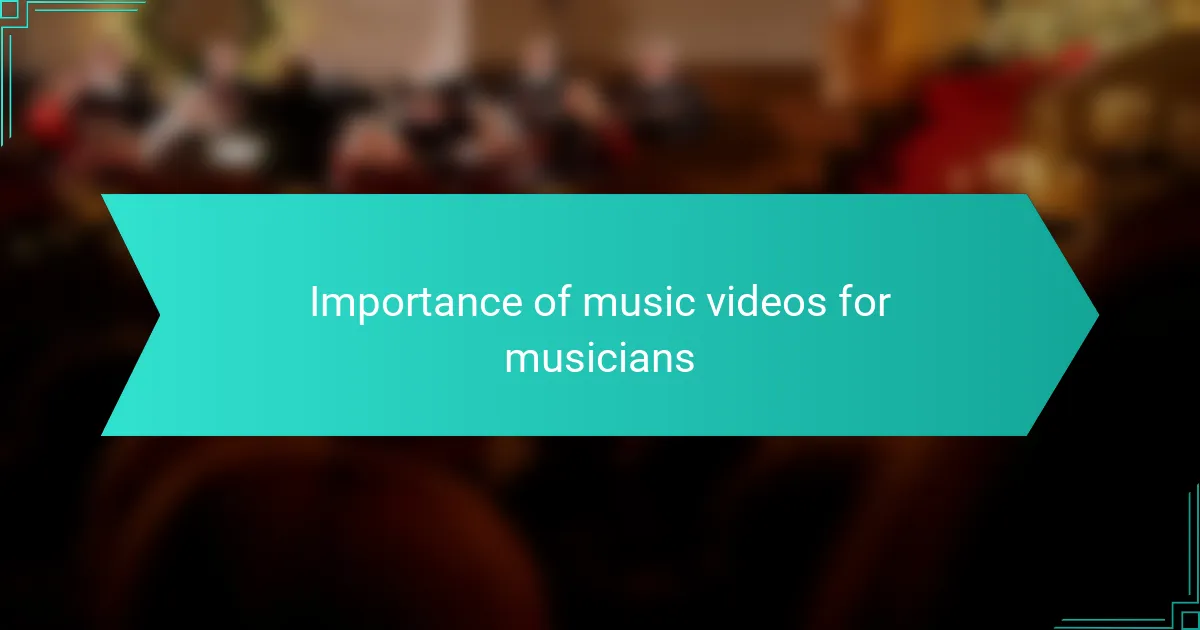
Importance of music videos for musicians
Music videos serve as a powerful tool for musicians to enhance their artistic expression and brand identity. I remember when I released my first video; the feedback I received was remarkable. People connected with the visuals, and it felt like my song reached a deeper part of their emotions. Have you ever noticed how a striking image can linger in your mind long after the music has ended? That’s the captivating power of a well-crafted music video.
Beyond mere aesthetics, music videos offer vital exposure in today’s digital landscape. When I uploaded mine, I realized it was not just about showcasing my work but about increasing my visibility on platforms like YouTube and social media. Those extra views turned into new fans. Imagine how different your outreach could be when a visual story accompanies your sound; it opens doors you might not even know exist.
Moreover, creating a music video can help define your narrative as an artist. I often reflect on how specific themes or styles in my videos reflect my journey. They allow me to communicate my message in a more relatable and engaging way. So, every time I conceptualize a video, I ask myself: what story do I want to share? This thought process not only enriches my music but also builds a stronger connection with my audience.
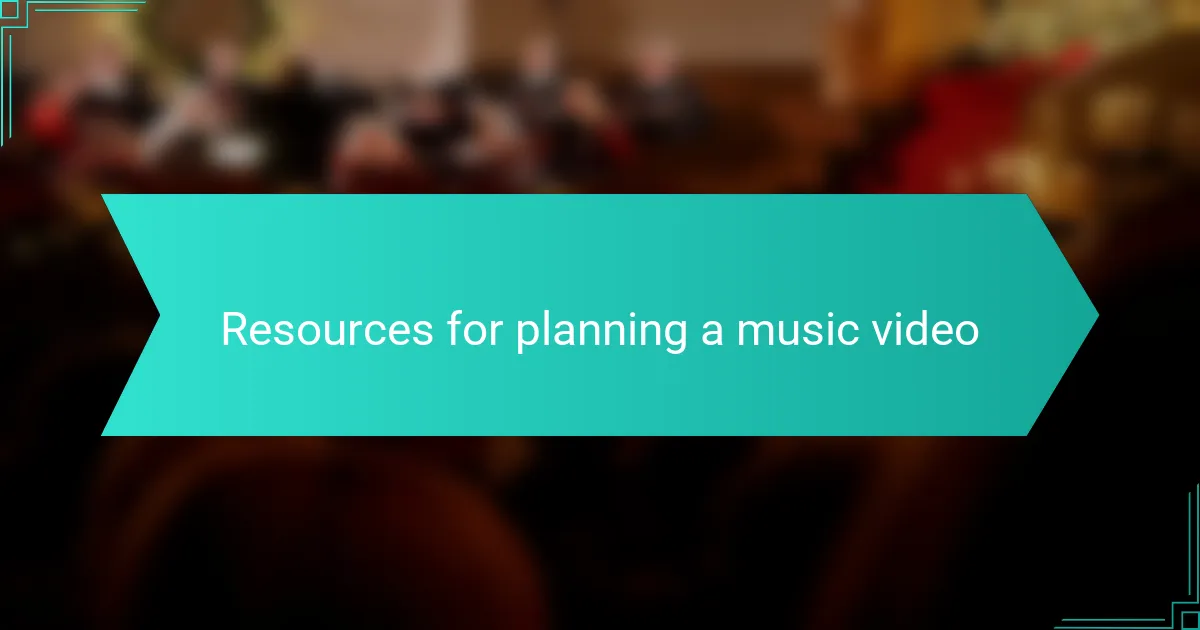
Resources for planning a music video
When planning a music video, having the right resources can truly make a difference. I remember the time I was preparing for my first video shoot; I spent countless hours gathering materials and learning about the equipment. It was a tough process, but in the end, understanding my resources gave me a clear path forward, turning my vision into reality.
One key aspect I found useful was exploring online platforms for inspiration and tutorials. Websites dedicated to video production can provide invaluable insights into storytelling, camera angles, and editing techniques. Additionally, collaborating with talented individuals, such as directors and cinematographers, can elevate your project dramatically.
Here’s a comparison of some essential resources for planning a music video:
| Resource | Description |
|---|---|
| YouTube | Great for tutorials on filming techniques and editing software, plus tons of inspiration from other artists. |
| Film Riot | Offers practical advice on low-budget filmmaking, making it accessible for emerging artists. |
| Canva | A user-friendly platform for creating storyboards and visual elements to help you visualize your video. |
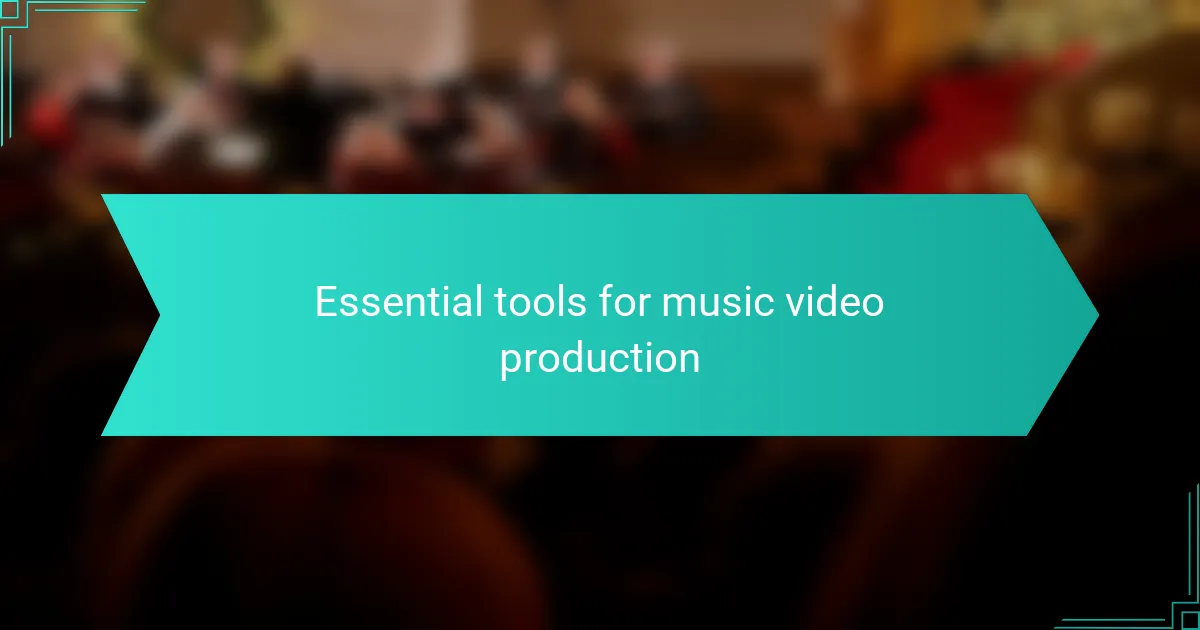
Essential tools for music video production
One of the most crucial tools for music video production is a quality camera. I distinctly recall my excitement when I invested in my first DSLR camera; it opened up a new world of possibilities. Have you ever captured a moment that felt magical just by pressing a button? The right camera can do that, turning a simple scene into an unforgettable visual experience. Whether it’s a high-end DSLR or even a smartphone with a great camera, the key is knowing how to utilize it effectively.
Alongside the camera, good lighting equipment is essential. When I was shooting my second video, I learned the hard way that natural light can be both a friend and a foe. The way light shapes a scene can drastically change its mood. Have you noticed how dramatic shadows can add to the intensity of a performance? Investing in softboxes or LED lights can help you create the atmosphere you envision, ensuring every shot captures your artistic intent.
Lastly, video editing software is a game-changer in post-production. My first experience with editing was a whirlwind of frustration and exhilaration. I remember piecing together clips and realizing how much power I had to transform my raw footage into a cohesive story. Programs like Adobe Premiere Pro or Final Cut Pro might seem daunting at first, but they offer incredible tools to enhance your visuals. How can you elevate your footage to match the emotion of your song? The right software allows you to explore endless creative options, turning your vision into reality.
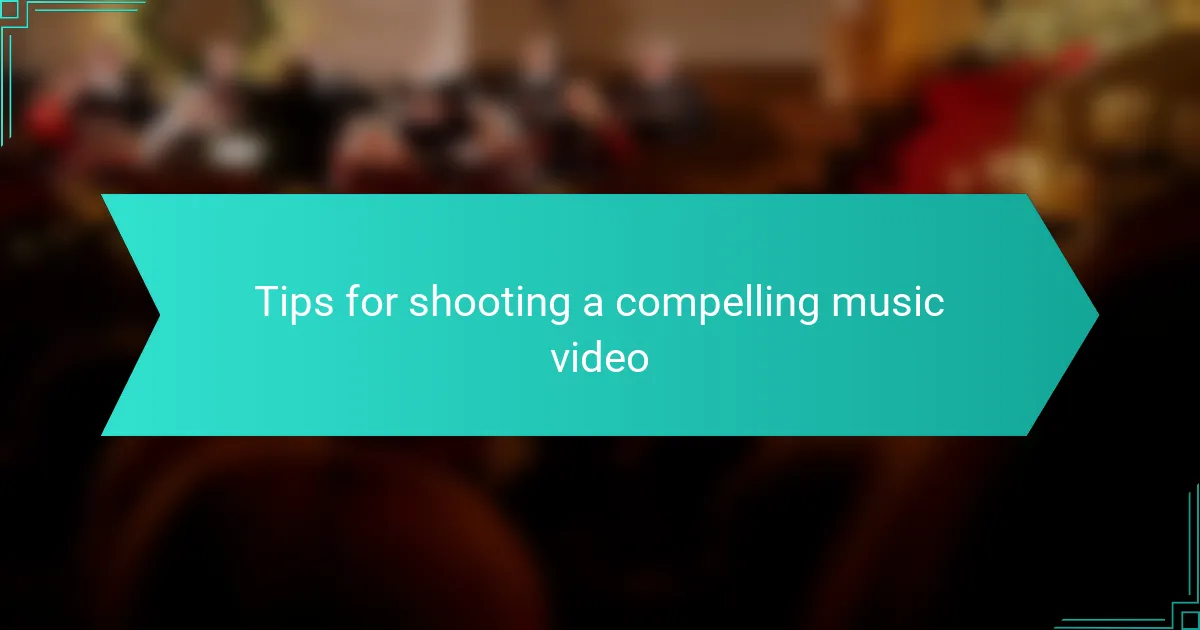
Tips for shooting a compelling music video
When shooting a compelling music video, I believe that storytelling is crucial. I’ve found that a clear narrative can transform a simple performance into a captivating experience. For instance, I once incorporated a day-in-the-life concept that not only showcased my music but also connected deeply with the audience’s emotions, making the video much more memorable.
Another tip is to pay attention to lighting and locations. I remember a shoot where we found an abandoned warehouse that created a perfect atmosphere for my song’s theme. The natural light and raw settings added depth, enhancing the overall look and feel of the video.
Lastly, collaboration is key. Working closely with a skilled director or a creative friend can bring different perspectives and elevate the project. When I teamed up with a videographer who understood my vision, the final product was something I couldn’t have achieved alone.
| Tip | Details |
|---|---|
| Storytelling | Craft a narrative that resonates with the audience, enhancing emotional connection. |
| Lighting and Locations | Choose visually striking settings and use lighting creatively to enhance mood. |
| Collaboration | Work with talented individuals to bring new ideas and insights that elevate your video. |

Personal insights on music videos
Creating a music video can be an intensely personal experience. I remember standing in front of the camera for my first shoot, nervous yet exhilarated, as I realized that every frame was like a piece of my heart laid bare. How do you make your emotions resonate? I found that by channeling my vulnerabilities into the performance, I could connect with viewers on a deeper level, turning a simple video into a shared experience.
Throughout the process, I learned how important it is to embrace spontaneity. During a particularly uninspired day of shooting, we decided to take a break and explore the location. Surprisingly, we stumbled upon an unexpected backdrop that perfectly encapsulated the song’s mood. This incident reminded me that sometimes the best moments come from being open and flexible. Have you ever experienced a creative block that turned into an opportunity? Those unplanned moments can make your music video uniquely yours.
In what seems like an endless sea of content, it’s easy for artists to feel overshadowed. I often ask myself: what makes my video stand out? I believe it’s the authentic moments that speak the loudest. For instance, incorporating behind-the-scenes snippets can give viewers a peek into your creative journey. It’s not just about the polished final product; it’s about telling a story that resonates, inviting your audience to be part of your artistic adventure.
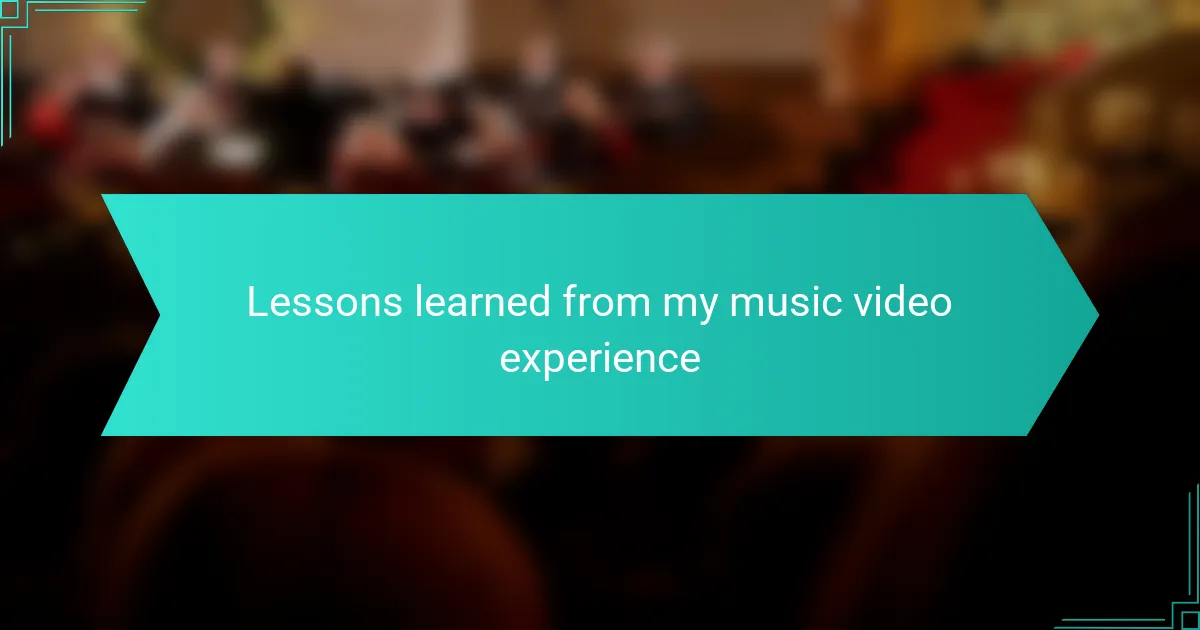
Lessons learned from my music video experience
Creating a music video was an eye-opening experience for me. I realized early on that planning and communication are essential. I remember feeling anxious during the shoot, but seeing the final product made all the stress worth it. It taught me that collaboration can lead to unexpected and beautiful outcomes.
During the process, I learned to embrace flexibility. Some of the best moments were spontaneous, like when we captured a scene during sunset that wasn’t in the original plan. This taught me that sometimes, unplanned moments can become the heart of your work.
Moreover, I found the importance of storytelling in music videos. The visuals can amplify the song’s message, making it more impactful. I believe a strong narrative can resonate deeply with viewers and create a lasting impression.
| Lesson | Application |
|---|---|
| Planning & Communication | Organizing shoot schedules and roles eagerly to avoid confusion. |
| Embracing Flexibility | Incorporating spontaneous ideas or changes during filming made scenes more authentic. |
| Storytelling | A clear narrative enhances the emotional connection with the audience. |

